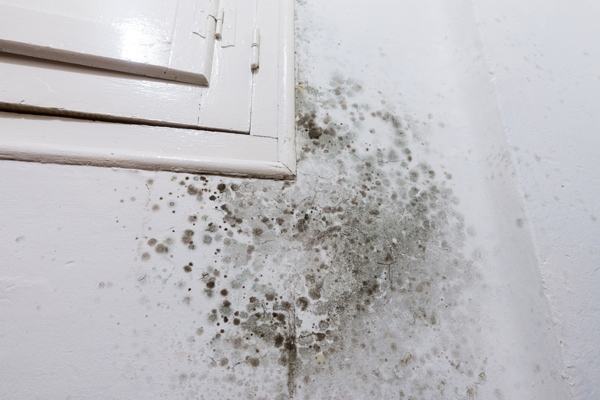With Monday 5th June being World Environment Day, the focus will rightly be on how we preserve our planet’s fragile environment.
But never forget that other special mini-environment - the one within our homes.
Improving and managing air quality, both for new-builds and existing dwellings, will be a major priority as the EPC regulations change up to 2030.
Advice published by NICE, the National Institute for Health and Care Excellence, urges authorities to ‘embed a plan for improving indoor air quality in an existing strategy or plan to improve people’s health.’ It adds that ‘the emphasis should be a balanced approach to ventilation, insulation and heating to achieve it.’
The BRE Trust, an independent charity dedicated to improving the built environment, goes further. It estimates that poor housing is costing the NHS £1.4billion a year to treat those affected.
So what are the main problems that need to be overcome and the latest high-tech solutions that could help?
1) Poor ventilation
The problem: Polluted air combined with poor ventilation causes dry throats and eyes, concentration disorders, fatigue, headaches, shortness of breath, poor sleep, drowsiness and dizziness.
The solution: Opening windows and doors at home is the simplest way of improving ventilation but that can introduce pollution such as car fumes if near a road. A better solution is to ensure the home is sealed properly in the first place then ventilate with trickle vents or mechanical ventilation. AeroBarrierUK, for instance, incorporates the latest sealant technology to prevent air leakage and draughts. A waterborne, non-toxic mist is released into a pressurised home where it plugs gaps up to 12mm. The sealant mist is drawn into visible and invisible gaps where it solidifies to create a seal and improve air tightness.

Poor ventilation can cause numerous health issues
2) Damp and mould
The problem: A 2021 analysis of Google searches on damp issues revealed 12,636,555 queries raised in the UK. Mould can emit spores, cells, fragments and "volatile organic compounds". Inhaling or touching spores can cause an allergic reaction, such as sneezing, a runny nose, red eyes and - in extreme cases - even cause death.
The solution: One way is to treat the areas affected with chemicals but a better method is to predict where mould might grow before it does. Build Test Solutions’ SmartHTC system, for instance, is a low-cost highly scalable test that provides a definitive measure of the thermal performance of a building. But SmartHTC goes beyond just reporting on thermal performance metrics by providing a mould risk indicator. It assesses the mould and condensation risk of a building, providing live overall scores and individual room risk scores.
3) Inadequate heating
The problem: An estimated 36 million people in Europe were unable to keep their homes adequately warm in 2020. Occupants of cold homes face a higher risk of stroke, respiratory infection and falls or other injuries due to reduced strength and dexterity in low temperatures.
The solution: As Britain strives for more sustainable lifestyles, air and ground heat pumps are coming more to the fore. They operate by taking heat from the air or ground, and perform best in a well-sealed home.
4) Carbon monoxide
The problem: Poisoning by carbon monoxide occurs as the result of poorly ventilated and maintained combustion sources (gas boilers, fires etc). In England and Wales there are believed to be around 40 deaths and 250 hospital admissions a year from CO poisoning (Faculty of Public Health).
The solution: A carbon monoxide alarm for each room containing appliances that burn gas, oil, coal or wood. Heating and cooking appliances should be properly installed and well maintained with boilers serviced regularly by a qualified engineer. Chimneys and flues should be kept clean.

Damp and mould
5) Inadequate energy efficiency
The problem: More than half of all UK rental homes do not comply with the new energy efficiency standards that will come into law in just three years. Many older, privately-owned homes also have low ratings.
The solution: Loft, wall and floor insulation make a difference as does fitting energy-efficient windows and keeping an eye on heating controls. What people often miss, however, are draughts. A lot of older homes aren’t very air-tight and would benefit from targeted remedial work. Finding these problems is relatively easy, with solutions like Build Test Solutions’ Heat3D able to identify areas of heat loss quickly and with minimal disruption to occupants.
Improving air quality in the home environment combined with all these other improvements would undoubtedly benefit thousands across the UK.
“In a perfect world everyone would be living in an indoor environment with the purest air, the warmest conditions and perfect ventilation,” said Luke Smith, Managing Director of Build Test Solutions. “But given that the UK’s housing stock is some of the oldest in Europe it will always need improvement and only by first having accurate testing before and after a retrofit will accurate solutions be achieved.”
Hugh Franklin of AeroBarrierUK, added: “With the new EPC rulings coming by 2030 constructors will have no choice but to ensure the homes they build provide people with a far better environment to live in than has historically been the case. A perfectly sealed home with a guaranteed level of airtightness, efficient ventilation and good heating is definitely achievable.”
https://www.buildtestsolutions.com/
https://www.aerobarrieruk.co.uk/how-it-works/
Image © AdobeStock
- Log in to post comments













